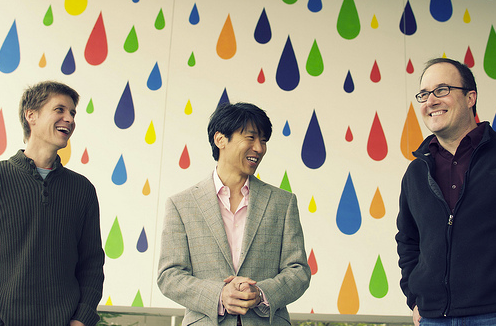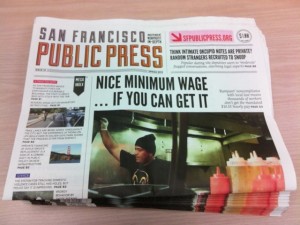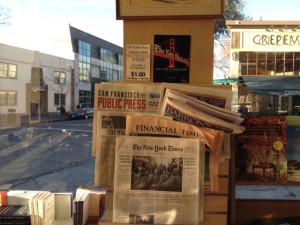Each week The Illuminations Project examines a journalistic initiative that’s working, but unless its ingredients for success are properly documented these wins could prove difficult to replicate.
After a month of exploring what’s working through both this blog and @jtmstream, I’ve decided to start assembling a list of what we’ve learned through The Illuminations Project so far.
We’ve also started a new page called The Takeaway where we will continue to build our list of things we’ve identified that appear to be working. If you see something you’d like to see on the list please add it as a comment below.
- Find the right people to work with. (Matter)
- Hackers, hustlers, designers and storytellers are all necessary to transform an idea into a company. (Matter)
- Partnering with local businesses, including bookstores, newsstands, markets and coffee shops can provide a distribution network for independent newspapers. (SF Public Press)
- Begin with an “architecture of openness.” (SF Public Press)
- Partner with organizations doing what you’d like to be doing and you’ll learn how it’s done. (SF Public Press)
- It is possible to produce a sustainable news product without advertising. (SF Public Press)
- Individual Donors and Foundation Support are both vital. (SF Public Press)
- Paid membership programs can provide a revenue stream and increase community investment on multiple levels (SF Public Press)
- Nonprofits will often choose other nonprofits for partners. (SF Public Press)
- Producing “niche news products aimed at specific, interest groups” continues to be a successful strategy (GeekWire)
- “You’ve got to work your butt off.” (GeekWire)
- It is sometimes necessary to leave old media organizations — they are not built to foster entrepreneurial endeavors — and build it independently. (GeekWire)
- “You have to have five or six mini business connected to your editorial business” in order to generate enough revenue. (GeekWire)
- It’s important to learn how to be a good beat reporter before you add running a business on top of reporting. (GeekWire)
- “Investors need to share the vision of the entrepreneurs. And it helps if they bring expertise to the effort.” (GeekWire)
- In the future there will be live eyewitness video available whenever any news story breaks. (AP and LiveU)
- It is now possible to stream 1080p HD video using equipment that rents for $2k a month. (AP and LiveU)
- It is possible to bond your laptop’s wifi connection with one or more cellular connections to increase bandwidth using software. (AP and LiveU)
- Developing a UGC component to any new endeavor will massively expand its editorial potential. (AP and LiveU)




 “There are many examples of corporations that have no compunction at all,” Stoll said when asked why the Public Press has chosen to only partner with nonprofit organizations. “Journalistically there are very many similar start-ups to ours that share our values and outlook, but we would rather support the community that grew up around the culture. … There’s a sense of camaraderie in the nonprofit sector.”
“There are many examples of corporations that have no compunction at all,” Stoll said when asked why the Public Press has chosen to only partner with nonprofit organizations. “Journalistically there are very many similar start-ups to ours that share our values and outlook, but we would rather support the community that grew up around the culture. … There’s a sense of camaraderie in the nonprofit sector.”